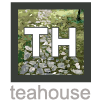User talk:EKays3838
| This user is a student editor in Clackamas_Community_College/WR121_(Fall_2018) . |
EKays3838, you are invited to the Teahouse!
[edit]
|
Hi EKays3838! Thanks for contributing to Wikipedia. We hope to see you there!
Delivered by HostBot on behalf of the Teahouse hosts 16:04, 29 September 2018 (UTC) |
Welcome!
[edit]Hello, EKays3838, and welcome to Wikipedia! My name is Shalor and I work with the Wiki Education Foundation; I help support students who are editing as part of a class assignment.
I hope you enjoy editing here. If you haven't already done so, please check out the student training library, which introduces you to editing and Wikipedia's core principles. You may also want to check out the Teahouse, a community of Wikipedia editors dedicated to helping new users. Below are some resources to help you get started editing.
Handouts
|
|---|
Additional Resources
|
|
If you have any questions, please don't hesitate to contact me on my talk page. Shalor (Wiki Ed) (talk) 17:05, 2 October 2018 (UTC)
Draft Review
[edit]Hi EKays3838,
You have a very nice rough draft! It's interesting and full of information that is easy to read and understand. You do a very nice job of explaining to the reader your topic and how it fits in with Egyptian and Norse mythology. Your formatting and organization is logical and well done. Good work!
--Critiques--
[edit]Grammar:
[edit]There are several devourer entities in Egyptian mythos ((add comma)) but the most well known would be Apophis (or Apep). Apophis is the God of Darkness, Chaos, Evil and Destruction who was surprisingly enough ((remove "surprisingly enough")) , ((remove comma)) the brother of Ra. Every night ((add comma)) Ra would descend into the underworld to start the cycle for the next day. During this time ((add comma)) Apophis would attempt to devourer (( remove the "er" from "devourer")) him, thus preventing the sun from rising the next day, (( add "and")) destroying the world. In this story ((add comma)) Apophis is clearly seen as a devourer entity as he devourers the sun and ends the world. Another devourer in the Egyptian mythos is Ammit the Devourer. Ammit is different in that she does not seek to destroy the world ((add comma)) but instead is used as way to judge the dead. When people die they are brought before Osiris where there ((incorrect usage of "there". replace with "their")) life would be weighed against the feather of Ma’at ((what is the feather of Ma'at? Provide context)). Should there ((incorrect usage of "there". replace with "their")) evil actions in life outweigh their good actions ((add comma)) than ((replace "than" with "then")) Ammit would devourer ((remove the "er" from "devourer")) their heart, granting them a ‘second death’ of sorts. In this instance ((add comma)) Ammit is not an agent of evil, but punishment for the guilty dead.
Within Norse mythology, lies (( try using a different word than "lies". try "there are")) many devourers who hungered for many ((try using a different word than "many" here. You have already used it once in this sentence)) things ((add semi-colon)) from the end of all creation, to freedom from an arguably unjust punishment. On one end of the scale ((add comma)) there is Nidhogg ((what is Nidhogg's story? what did he do? add context)) who lies beneath the roots of the great ash tree Yggdrasil, who’s branches and roots touch all nine realms of creation ((what are the nine realms of creation? add context)). According to legend ((add comma)) Nidhogg gnaws at the roots of Yggdrasil and will one day chew threw ((incorrect usage of "threw". replace with "through")) them all, toppling the world tree and bring ((and "ing" to "bring")) about Ragnarok, (( replace comma with a semi-colon)) the end of everything. Once again we have a serpent figure who seeks to start the end of the world ((This sentence makes sense, but there is no further context. what do you mean by this? who is the serpent figure? Is Nidhogg the serpent figure?)). On the opposite end of the spectrum we have Hati and Skoll ((add comma)) the twin sons of Fenrir (or Fenris). When their father Fenrir was chained to a boulder, the twin wolfs (("wolfs" is not a word. replace with "wolves")) rushed out to avenge their father ((add comma)) but they too were captured. Seeing a use for them ((add comma)) the Allfather,((remove comma, it is not needed)) Odin, ((remove comma, it is not needed)) cursed them so that they would forever chase the sun and moon until Ragnarok came ((end sentence here. the sentence you have now is a run-on)) and ((remove "and")) only them (( replace "them" with "then")) could they return to the earth. In this case ((add comma)) Hati and Skoll were forced to become ‘devourers’ of the sun and moon and can only be freed at Ragnarok.
Additions you could make:
[edit]People who have no background knowledge of mythological entities might find this a little confusing. My suggestion would be to add context to those you do mention. Example: Who is Nidhogg? What is Osiris the god of? Who is Fenrir? I personally understand who you are talking about, but others might not! I would also recommend to separate the "people" you do mention into subcategories for better organization. I was intrigued by the feather of Ma'at, and would like to know more. Is there a wiki page you could link it to? If not, I would recommend going into further detail.
